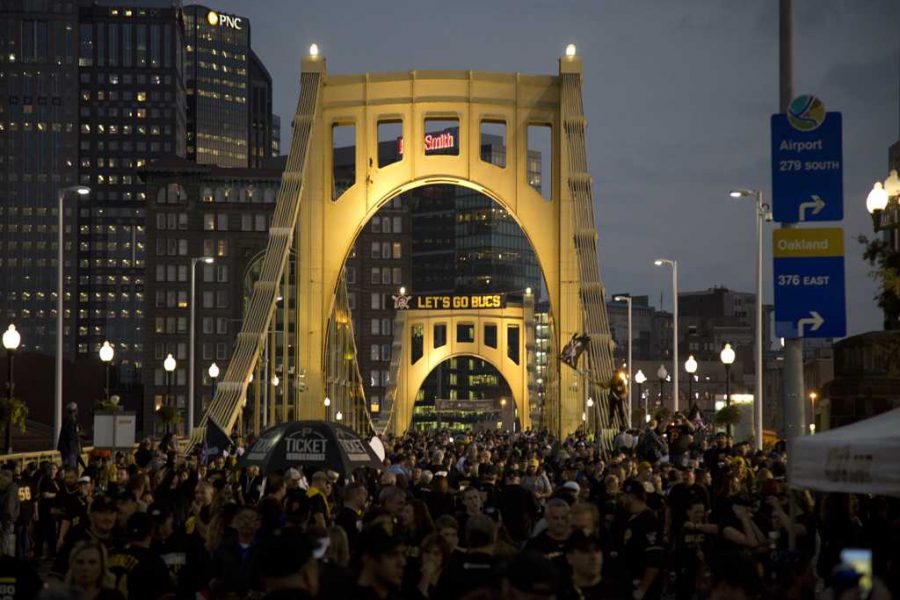Point-Counterpoint | Money is the root of the Pirates’ problems
A stream of Pirates fans cross the Roberto Clemente bridge.
November 17, 2021
This column is part of a point-counterpoint series. To read the counterpoint, click here.
In every sport not named baseball, a system of checks and balances helps keep parity alive, preventing one team from becoming a powerhouse for an extended period of time. Teams are forced to draft well, develop from within and use strategy to remain competitive.
This is all thanks to the salary cap — a ceiling on how much teams are allowed to pay their entire roster. But Major League Baseball does not have such a mechanism. As a result of the MLB’s lack of a salary cap, the upper tier of the league has remained relatively stagnant for years.
The 2021 season was no exception. Sure, there are some outliers such as the Tampa Bay Rays, who made a World Series appearance in 2020, but the teams near the top of the standings are nearly always the ones with the highest payrolls.
While the Dodgers were able to use their big-market financing to hand out $271.2 million in payroll during the 2021 season, the Cleveland Indians only paid $50.2 million to field a team. The Dodgers have reached the National League Championship Series in five of the past six years, while Cleveland has won just two playoff series since 2007.
Both of these numbers are huge issues, but the $271.2 million is the more concerning of the two since it is the reason why the $50.2 million figure exists.
This financial disparity between the small and big market teams causes the little guys of baseball to mail it in during seasons where they do not see themselves being competitive. It’s hard to win when rich teams can wield their wealth to drain poor teams of young talent.
Setting a salary cap would get rid of the obscene inequalities and allow for more parity within a league that badly needs it.
Four of the five highest paid teams in baseball made the playoffs last season, while the bottom five all missed the cut. There is a direct correlation between how much teams pay their players and how successful they are — teams that don’t rake in the big bucks shouldn’t be at an inherent disadvantage.
People may see a theoretical salary cap as a punishment for being good, but that couldn’t be further from the truth — this just makes them earn it. For example, the Rays are a team that developed homegrown players while spending money in free agency to add complementary pieces and form one of the most successful rosters in the sport.
This is not to say that signing big-name free agents would be a thing of the past, but it would bring an end to “superteams” that are able to make headliner trades and free-agent signings that aren’t possible for the lower payroll teams. Blockbuster free agents are accessible to only the richest teams in the league, leaving the small market squads left scrambling for a player they can get at a discount.
There should be more involved in building a team than simply throwing money at a problem.



